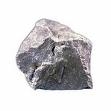| Home > 4. Drinking Sodium Bicarbonate Solution > 4.4 Cobalt Carbonate |
 Previous Next Previous Next  |
|
|
|
The food processing and drinking water industries require Saturated sodium bicarbonate solution.
Films
The film with the highest refractive index, and consequently the more densely packed structure, was obtained following a 30-minute anodization period. [14]
Open circuit potential measurements have shown the formation of a film with a bilayered structure, organized as a thin Co3O4 outer layer and a thick CoO inner layer. The existence of Co3O4 as a thin outer layer, previously postulated from galvanostatic reduction experiments, has been confirmed from XPS analysis. [15]
Hydrogen
This higher cobalt requirement by methylotrophic microorganisms, compared to hydrogenotrophic and acetoclastic methanogens, has several technological and microbiological implications. From a technological standpoint, cobalt is an important nutrient that should be considered during the anaerobic treatment of wastewaters with methylotrophic substrates. [16]
I have developed a methodology, based on macroeconomic and trade models, to estimate the market for sodium hydrogencarbonate (sodium bicarbonate) for those countries serving the world market via exports or supplying from various countries via imports. I do so for the current year based on a variety of key historical indicators and econometric models. [17]
Another more recent process of producing ethanol is by the reaction of methanol with hydrogen and carbon monoxide (syn gas). This method has significant advantages because relatively inexpensive reactants are employed. [18]
 LES LESProperties: At normal temperature, it is a kind of clear, colorless liquid with characteristic of pungent odor. Its density is 1.2201(20/4?C), melting point is 8.6?C,boiling point is 100.8?C, flash point in open cup is 68.9?C and auto-ignition temperature is 601.1?C.It can be mutually dissolved with water, ethanol and glycerol. [21]
Meanwhile, a method using a manganese cobalt composite carbonate as a parent material has been proposed. Related Art 3 discloses a manufacturing method of a nickel manganese cobalt composite carbonate in which a solution containing a sulfate of nickel, manganese, and cobalt and an aqueous solution containing an ammonium bicarbonate are simultaneously or alternately added to a solution containing water by a falling-drop method while maintaining pH of the mixture at 6.5-8.5, so as to cause a reaction. [22]
For example, Cone 9 fired at 60?C per hour, will melt over at 1260?C; Cone 9 fired at 150?C per hour will melt at 1280?C; i.e. When firing, especially stoneware, always use cones as your final guide. [23]
|
|
|
|

